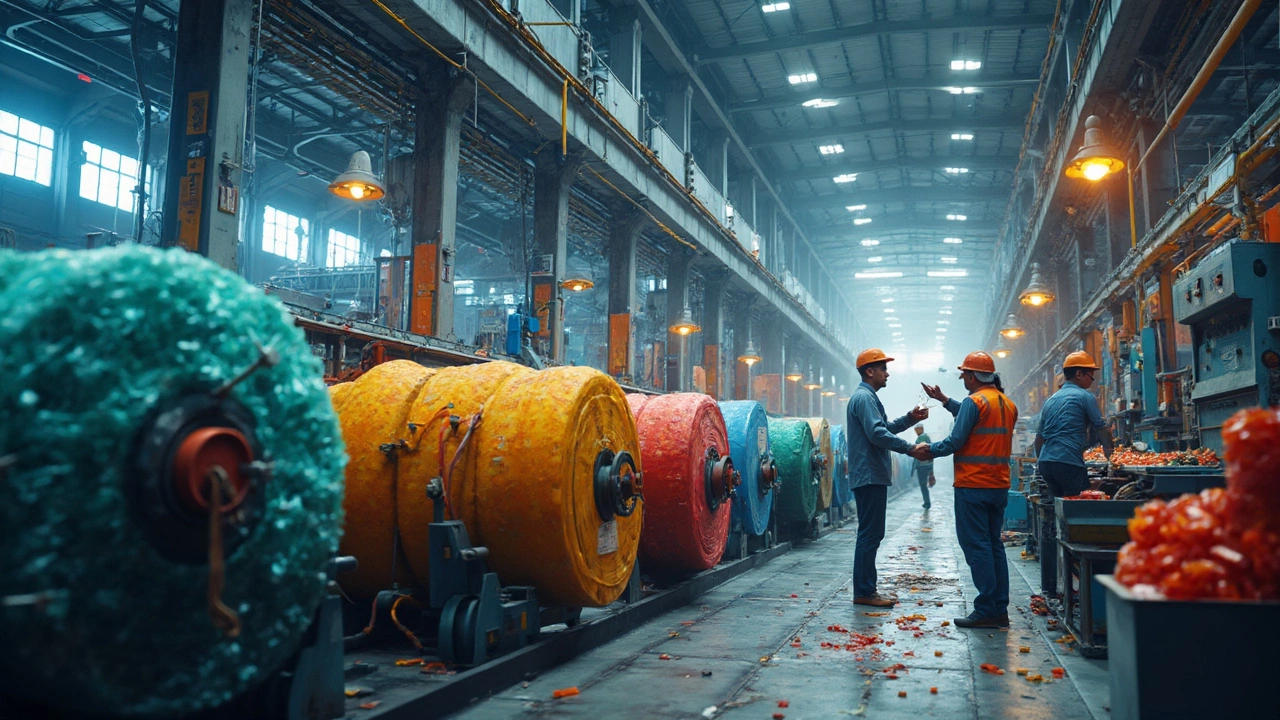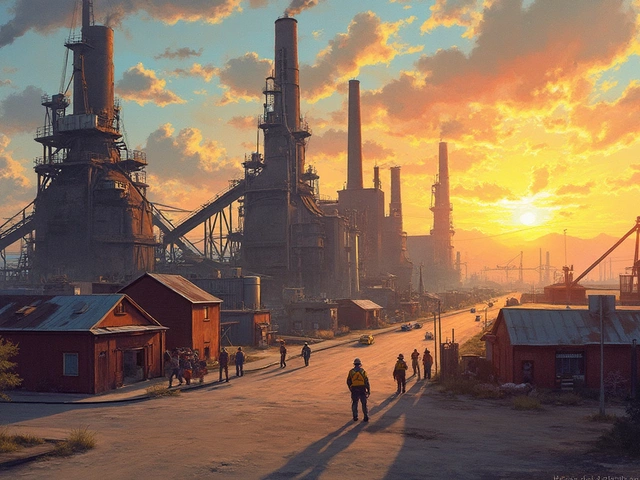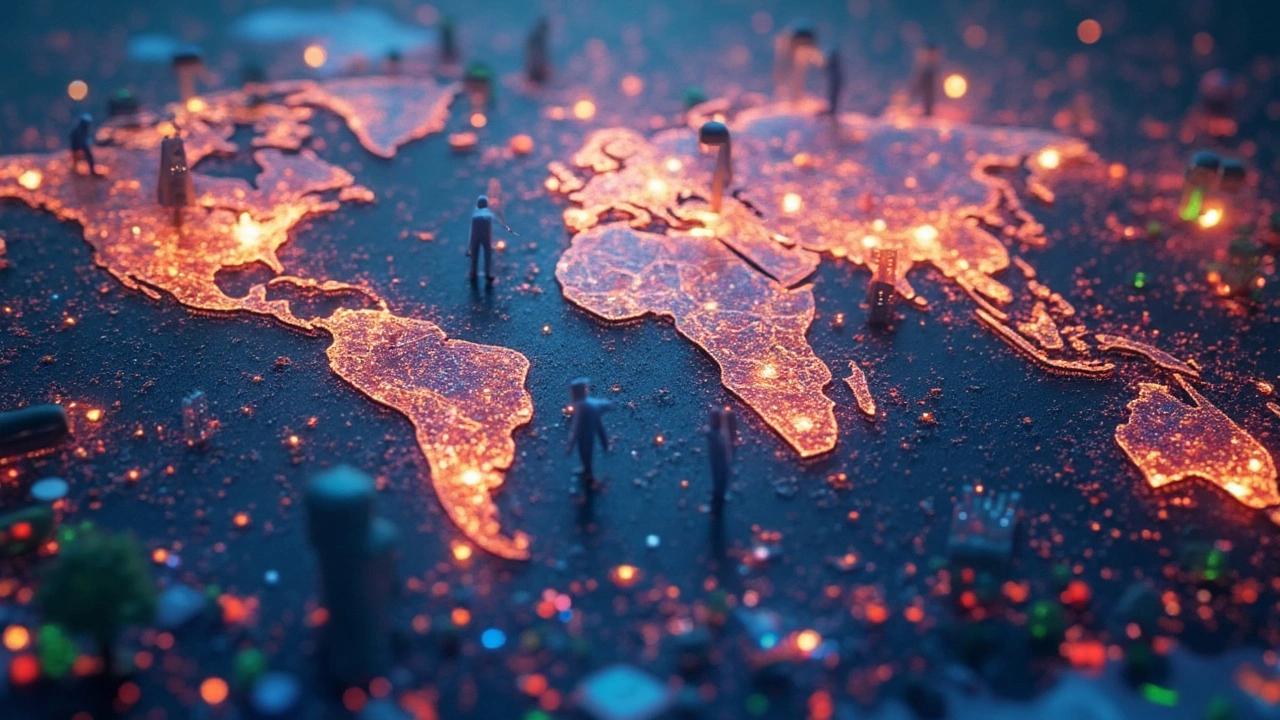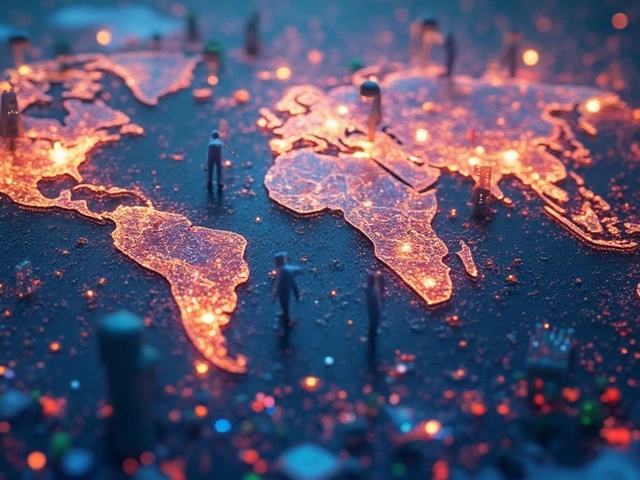Ever wondered where all the plastic around you actually comes from? Think about it—your water bottle, that phone case, even your kid’s toy truck. There’s a good chance the raw material started its journey in the factory of a massive plastic supplier. And no, it’s not just some hidden company tucked away in a far-off country. The biggest name in the game is China’s Sinopec, pumping out more plastic than anyone else on the planet.
Sinopec isn’t just big—they’re gigantic. In 2024, they cranked out over 11 million tons of plastic resins. For context, that’s enough to fill thousands of Olympic-sized swimming pools with tiny plastic pellets. And that’s just one year. If you’ve ever tried to cut back on using plastic, you know how tough it is because suppliers like Sinopec have made it so cheap and available everywhere.
If you make products, run a business, or just care about where your stuff comes from, knowing about the world’s biggest plastic supplier is more than just trivia. It can help you track pricing changes, understand why there’s a sudden shortage of certain plastics, or even guide you if you’re looking for more responsible suppliers. Being clued in means you won’t get sideswiped when the market shifts.
- The Reigning Plastic Powerhouse
- How Plastic Giants Stay on Top
- The Global Impact of Mega Suppliers
- What It Means for You and the Planet
The Reigning Plastic Powerhouse
If you’ve ever wondered who runs the show in the world of plastic, look no further than Sinopec. This Chinese company isn’t just a leader—they’re the world’s plastic supplier heavyweight. They outpace the competition with numbers that make your head spin.
Here’s why Sinopec towers above the rest: They’re state-owned, which means huge support from the Chinese government. They control a huge slice of the supply chain. From oil refining all the way to making finished plastic resins, they do it all under one roof. That gives them scale and efficiency others just can’t match.
If you want the raw numbers, get this—Sinopec’s main plastic plants produced over 11 million tons of plastic resin last year. That puts them ahead of big names like ExxonMobil Chemical (USA) and LyondellBasell (Netherlands). Take a look at these numbers from 2024:
| Company | Country | 2024 Plastic Resin Output (million tons) |
|---|---|---|
| Sinopec | China | 11.3 |
| ExxonMobil Chemical | USA | 7.5 |
| LyondellBasell | Netherlands | 6.6 |
| SABIC | Saudi Arabia | 6.2 |
Why does this matter? Well, it means a ton of products that end up in our homes—everything from sneakers to sandwich bags—have roots in Chinese manufacturing. And when Sinopec shifts prices or production, the impact ripples into everything: shipping, product costs, and even availability on store shelves.
Are there downsides to having such a giant at the top? Absolutely. A single player with this much power can set trends fast, squeeze out smaller suppliers, and make it tough to shift to new and better materials. Plus, if you’re a business, keeping track of Sinopec’s decisions is just smart planning—they influence the whole market, whether you like it or not.
How Plastic Giants Stay on Top
Here’s what separates the big dogs like Sinopec from your average plastic manufacturer: they’re great at being efficient, cutting costs, and finding customers all over the map. But it’s not just luck or muscle—these companies have a playbook that keeps them ahead, year after year.
First, they lock down deals on cheap raw materials. Sinopec, for example, sits on massive oil and gas reserves, so they can make plastic resin without paying middlemen. That’s a huge edge, especially when oil prices swing up and down.
Second, their factories are gigantic and modern. We’re talking production lines that run 24/7 with hardly any downtime. The scale means they can churn out plastic in mind-blowing volumes and get better prices for shipping huge batches everywhere from America to Southeast Asia.
On top of that, these top plastic supplier companies have figured out the global game. They know what regulations to follow, they set up distribution hubs in smart places, and they’re always on the lookout for new tech that makes plastic production faster or greener. When a new law comes in about recycling or environmental standards, they adapt way quicker than the small shops. That’s why you keep seeing their names in business headlines again and again.
- Direct access to raw materials slashes their costs.
- Massive factories mean more product, less waste.
- Strong logistics help them reach customers in over 100 countries.
- Investment in research leads to innovative plastics and eco-friendlier options.
Check out just how much the big brands produce compared to their competitors:
| Company | 2024 Plastic Production (million tons) | Countries Served |
|---|---|---|
| Sinopec (China) | 11.2 | 120+ |
| LyondellBasell (Netherlands/US) | 6.4 | 100+ |
| ExxonMobil Chemical (US) | 5.8 | 95+ |
| SABIC (Saudi Arabia) | 5.5 | 90+ |
If you’re in business, take a page from their book: secure good suppliers for your own materials, keep your processes lean, and stay sharp on the latest industry changes. That’s the fastest way to avoid nasty surprises—and maybe even give the giants a run for their money someday.

The Global Impact of Mega Suppliers
When a handful of companies make most of the plastic in the world, a lot of things ripple out from there. The biggest players, like Sinopec, have their hands in every corner of daily life. From the packaging on shelf-stable snacks to car interiors, it’s often the same resin, just shaped and colored differently. The scale is wild: about half of the world’s plastic is produced in Asia, and China alone accounts for more than 30% of global plastic production.
The way these giant suppliers move their products shapes the market in real ways. For example, when Sinopec or ExxonMobil tweak their prices, companies that make toys, vehicles, and electronics all feel the shift. That chain reaction can end up affecting the price of your next TV or even the bag your bread comes in. Plus, these companies have a big say in where plastic waste winds up. For years, lots of used plastic was shipped from the US and Europe to China. That changed in 2018 when China’s National Sword policy banned many plastic imports, forcing countries to scramble and find new ways to handle their trash.
The environment takes the biggest hit. The top suppliers crank out mountains of single-use plastics—think food wrappers, water bottles, and shopping bags—that clog up oceans and landfills. The United Nations reports that yearly plastic production has soared to over 400 million tons, with about 36% going into disposable packaging. Only around 9% gets recycled. The rest? It piles up, sticks around for centuries, and even ends up in the food chain as microplastics.
- The supply is so concentrated that decisions made by a few major suppliers can kick off shortages or surplus in the global market within weeks.
- Efforts like Europe’s single-use plastic bans put pressure on these giants to adapt, but the global market still sees tons of new plastic made every year.
- If you run a business, keeping an eye on moves from the plastic supplier leaders can tip you off to big supply swings before they hit your costs or shelves.
Knowing how much control these megafirms have—and how quickly changes leak down to everyday products—can help you plan smarter, buy more responsibly, or just be more conscious about what you’re bringing home from the store.
What It Means for You and the Planet
When a single company like Sinopec controls so much of the plastic supplier market, the ripple effects show up everywhere—from your wallet to your recycling bin. Cheap plastic means products get made and sold at lower prices, but it also encourages more throwaway stuff. It’s no secret that most plastic isn’t recycled. Actually, according to the United Nations, only about 9% of all plastic waste ever made gets recycled.
Why should you care? Well, big plastic suppliers set the stage for what materials end up in the things you buy. If they shift what they make (maybe focusing on biodegradable options), it can change what you see on store shelves. On the flip side, if they don’t change, it’s tough for smaller brands or eco-friendly products to compete.
“The scale of production and disposal of plastics today has far outstripped our ability to manage it. This is not just inconvenient—it’s a major threat,” says Inger Andersen, Executive Director of the United Nations Environment Programme.
Here are a few facts you might not know:
- Sinopec and its peers control most of the world’s raw plastic supply, which means any supply chain hiccup hits global prices fast.
- Plastic production uses massive amounts of oil and gas. About 6% of global oil goes straight into making new plastic.
- Lightweight single-use plastic items (think food wrappers and water bottles) are the biggest problem when it comes to waste—these are used for minutes but last for centuries.
| Fact | Number |
|---|---|
| Annual global plastic production | 430 million tons |
| Plastic recycled worldwide | 9% |
| Oil used for plastics | 6% of total global supply |
| Plastic waste in oceans (2024) | ~12 million tons/year |
So, what can you do on a personal level? Consider choosing items with less packaging, supporting companies that use recycled materials, or even reusing things you’d normally toss out. Small changes add up—especially when millions of people do them together. Plus, with big plastic suppliers under more pressure from governments and the public, even simple choices like buying a reusable water bottle send a message that starts somewhere and ends up halfway around the world.






Write a comment